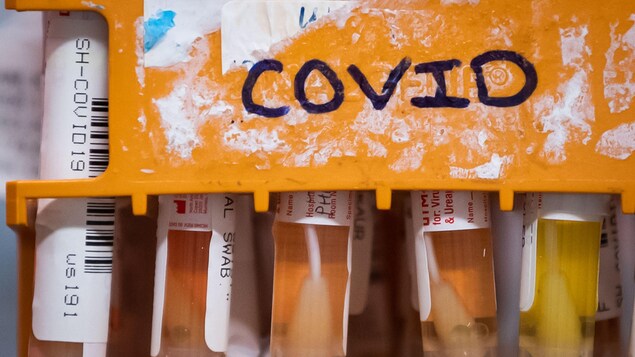The 2 cases of BA.4 reported in Quebec were detected in travelers following a sample collection on April 4, specifies the National Institute of Public Health of Quebec (INSPQ).
The Public Health Agency of Canada (PHAC) also reports a case of BA.5 in the country, without specifying in which province. BA.5 is the other sub-variant driving the current wave of infections in South Africa.
Public Health Ontario says it has not identified any cases of BA.4 or BA.5 so far.
Both subvariants are more contagious, according to preliminary observations, than the BA.2 strain that contributed to the sixth wave in the country, but not necessarily more virulent.
In addition to South Africa, they have been detected in Denmark, Germany and the United States, among others.
” Lines that may have transmission or immune evasion advantages are monitored in Quebec. The geographic location of the US in relation to Quebec reinforces the need to closely monitor the evolution of these variants. »
L’PHAC also says that its scientists are monitoring the situation closely: Scientists are on the lookout for signs that the BA.4 and BA.5 variants are altering the severity and spread of disease or impacting the effectiveness of diagnostic tests, vaccines or treatments for COVID -19.
According to University of Toronto epidemiologist David Fisman, the two subvariants range probably cause another wave
in Canada. This will depend on several factors, he says, such as schools, weather conditions, third and fourth doses of vaccination, population behavior and the spread of other variants that may overtake them.
Enough monitoring?
L’PHAC ensures that Canada has a rigorous monitoring program with provinces and territories
.
L’INSPQ is also reassuring. Quebec has a variant monitoring program carried out by random sequencing on samples from each region of Quebec. When this variant is introduced into the population, Quebec will know.
says microbiologist-infectiologist Judith Fafard.
However, the Institute clarifies that: The desired variant must be present in a proportion of 1-3% in the population to be reliably detected by the program, taking into account the characteristics of the program and the volumes of tests.
Provinces have significantly restricted access to PCR screening tests. In addition, the screening of travelers is no longer mandatory in the country.
Dr Fisman points out, however, that random testing continues at borders. He adds that Quebec, Ontario and Alberta are still sharing their sequencing results (B.C. is not). When the BA.4/5 sub-variants will take over
we will know, he said.
For his part, professor of epidemiology Timothy Sly of Metropolitan University of Toronto notes that the United Kingdom is doing a lot more testing to identify variants. Canada selects only a small percentage of cases for more detailed sequencing. However, who says small number says risk of missing the early identification of a new variant
he explains.
That said, for him, vaccination is key, whether it’s booster doses in Canada for adults and children, or the distribution of vaccines abroad. The real threat, he says, are people in countries that have not yet been able to establish a basic immunization program. Until they are protected, we WILL continue to see other variants, which may have more dangerous characteristics.
Reference-ici.radio-canada.ca
